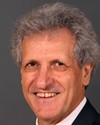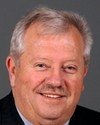Good morning. It's a privilege to be among our legislators.
We're going to discuss a subject as interesting as helicopters. You may have flown in them, but you may not have delved deeper into the helicopter flight system. The topic today will be the creation of an organization called the International Helicopter Safety Team. We will talk about the background of the IHST, why we did it, the outcome of the analysis we have done, what the recommendations are, and how the analysis applies to Canada.
I'll be sharing the presentation. I am Somen Chowdhury and I work for Bell Helicopter as manager of research. My colleague Sylvain Séguin works for Canadian Helicopters Limited as VP of safety and marketing.
The helicopter, as you know, is not a very simple machine to operate. A very complex aeromechanical system allows the helicopter to fly in two-dimensional mode, which very few means of transportation can do. A fixed-wing aircraft does not have the manoeuvrability of a helicopter, so this is kind of the realization of a dream of flight, but all benefits come with their own risks.
The helicopter flies within an envelope within the terrain, within the boundaries of the earth, as we say, at very low altitudes. It flies in all weather conditions. It does all kinds of missions that could not be done otherwise, so it comes with situations that are fraught with more danger than any other mode of transportation. However, I want to emphasize that the helicopter is not an unsafe system or vehicle.
But when you look at the statistics, as shown in our graph, you see that from 1991 to 2005--the red area is the U.S. data--the accident rate for helicopters was steady at 200. The numbers have not decreased. The world average was about 550 to 600 over that period of time.
While we have succeeded in bringing down the accident rates of other modes of vehicles, particularly in air transportation, the numbers for helicopters have remained the same. Mind you, these numbers are not big, but the fact that they have remained stable, steady, is what has drawn our attention.
So we as an association, the American Helicopter Society, and members of the OEMs all sat down together to discuss this and decided that we needed to do something, whether the government initiated something or not. We got together and decided to take action, not because the numbers were high, but because they have remained steady over the years.
Just to give you an idea of what an accident looks like, an accident is not a pleasant thing to watch or experience. It is catastrophic. It's very hurtful in terms of human life, harm done, equipment lost and everything. One accident is enough to take care of all the investment we have made in safety. Safety is not a money investment issue. It's not a concern about whether we should spend money or not. It has to be done.
In 2005 we all got together, and I organized a conference in Montreal. Again, Canada took the lead. We had about 265 of the world's helicopter folks there, including the regulatory people: the National Transportation Safety Board; ICAO; and accident investigation authorities from France and all over the world. The operators and the OEMs also came. We all agreed that we had to do something.
We set up the International Helicopter Safety Team and set up a mission for ourselves. It is totally voluntary. There was no requirement set up for us, but we all got together and took up a mission to say that we would provide industry and operator leadership to develop and focus on the implementation of an integrated data-driven strategy, which is very important--it must be data-based--to improve helicopter aviation safety. So the team is a result of cooperation among three partners, of their own volition.
Then, the vision was that we must achieve the highest level of safety in international helicopter operations. Our goal was very specific. We always talk of safety, but never take action. Here we decided that we needed to reduce helicopter accidents by 80% over 10 years. It was a very targeted goal for the year 2016, because we started in 2006.
So the IHST was formed. We had an executive committee of about five or six members. There are two co-chairs. One, from the FAA, is Mark Schilling, from the southwest region of the Rotorcraft Directorate. One, from the industry, is Matt Zuccaro of HAI, Helicopter Association International.
I'm a member of the executive committee. We also have Bob Sheffield from Shell Aircraft. We have, from AHS, Rhett Flater. We have Fred Jones from HAC as a member sitting here, and we have Jean-Pierre Dedieu of Eurocopter.
So then we created the worldwide JHSATs, which are the joint helicopter safety analysis teams, so that we can start analyzing the data. You can see in our chart here that we had one in Canada, one in the U.S., one in India, and one in Australia. In Europe, the EASA got on board. Now we are working with Japan, Russia, and South Africa, and we're trying to expand our role across the world because it's an international team.
The main thing is that the OEMs are here. Bell Helicopter, Sikorsky, Eurocopter, Agusta: these are the OEMs for helicopters. But their helicopters fly all over the world, so anybody's accident is our accident, and that is critical. There's no “you” and “us”. If you make a mistake or you don't make a mistake, your accident is our accident. That's the way we looked at it, and that's how we formed these teams.
Now, I must bring to light here that the Gore commission, in 1996, set up a committee called CAST, the Civil Aviation Safety Team. Its mandate was to look at an airline's transportation fleet accident fatality rate and reduce that by 80% over 10 years. This meant that from 1996 to 2006 they had to reduce their fatality rates by 80%.
CAST took up a database of accidents and made a system of analysis that we looked at very closely. We found that it fit into our scheme of things and our thinking, so we adopted their analysis modes and their approach. It's a data-based, date-driven approach.
In this model, as we are showing you here, you have the JHSAT, the analysis team, and the JHSIT, the implementation team. The analysis team will study the accident data, come out with the causal factors, and develop a mitigation strategy. The JHSIT will take up this mitigation strategy and implement it through the operator base, the regulators, and the government entities.
A data analysis team is being set up to look at the effects of the implementation strategies and to feed them back to the analysis team, implementation team, and executive committee, close the loop, and make the changes necessary in the process.
Now, any accident we see is just the tip of an iceberg. It's just an event that has happened. To make this event happen, there are a whole bunch of systemic issues that lead to it. These systemic issues are never seen. They're below the water level. We really have to address these systemic issues, which we call “standard problem statements”, to eliminate this.
In this analysis we are doing, we look at an incident or an accident, then go through the standard problem statements, and then analyze what caused this accident. That is the analysis we have done.
Normally you have about 1,200 situations that could lead to one visible accident. That's the average statistic. This is the story of the airline transportation industry. In 1941, the accident rate was eight to nine per one million departures. They have brought it down, through various interventions, to virtually zero per one million departures. Per one million departures, the accident rates for air transportation have come down drastically. We want to replicate this in the helicopter world.
I will work with you and show you some of the data that we are proceeding with.
This is the result of the U.S. analysis study, the JHSAT work from 2006 to 2009. For the year 2000, they found that 197 accidents had been reported by the NTSB, and in 2001, about 200 accidents had been reported by the NTSB. We studied that through the JHSAT team in the U.S. You can see that from year to year the blue and the yellow shown here just don't differ. The pattern is exactly the same.
If you look at the causal factors, pilot judgment and action have become the common...80% of the accident situations have something to do with pilot judgment. Lack of data in accidents also dominates as a major issue that we have to take care of. The safety management system is predominant as well. The absence of a safety management system is a contributing factor to many accidents.
So when we looked at the standard problem statement, this is how it lined up for the U.S., and it does not vary from year to year. It's pretty much the same. I'll show you the results from across the world as we stack up this data.
These are the intervention strategies that we came up with from those causal factors.
We found that simulator-based training and instruction is critical to solving most accidents. Today in the helicopter world, particularly for light helicopters, there are no simulators at all and there's no requirement to have simulator-based training.
If you don't have simulator-based training, you cannot fly to the corners of the envelope. You cannot simulate the risk situations and the what-if scenarios: what do you do in the fraction of a second that you're flying if this light comes on? You have to make critical decisions. That's where pilot judgment and action come into play.
This is true for aviation because you're flying at speeds, in the helicopter world, of between 250 to 300 kilometres an hour, very close to the ground, with all kinds of terrain and boundary conditions around you. You have to react, and you have to react fast, and you may not react the right way. In all the accidents we see, even the Cougar accident, where it ditched into the water, in the east.... It's not about blaming people for judgment and action.
But the fact is that the reality of the situation requires more training, and more simulator-based training rather than training on light Robinsons, which are prone to the most number of accidents because of the role it plays. Our strongest recommendation is that the safety management system be implemented.
Lack of data in an accident is critical. We need to have devices on board that collect the data so that in the event of an accident we can go back, look at what happened, and can take mitigation action. Today we can't do that for light helicopters. Only very big sophisticated helicopters have a flight data management system.
Maintenance is an issue. It's not as major a role player as the other items, but it is an issue.
We looked at the systems and equipment. This is the additional equipment that needs to be on board to provide additional situational awareness to the pilot to support him in his judgment decisions. It means that the more systems and equipment you put in a helicopter, the more expensive, more weighty, and less cost-effective it becomes. There's a balance for light helicopters in how to put in more equipment at lower cost and still provide the necessary input to the pilot.
Regulation plays a role, but it's not critical.
Infrastructure, of course, is important. By infrastructure, I mean weather conditions. When you are flying helicopters at a low level, very close to the ground, you don't have a microlevel weather prediction capability imparted to the pilot who is going from A to B and who sees an icing cloud forming between the two.
These helicopters are not certified to fly in icing conditions. What do they do? Do they fly through and reach a safe condition? Do they fly around? Or do they come back? They just don't know. When you are caught in icing, you don't know how to react either. That's just one situation.
There could be thunderstorms. There could be lightning. Weather is a major player, particularly when you're in offshore conditions and you don't have the microlevel weather prediction capability.
I'll show you another scenario here, if you could watch this, please.
[Video Presentation]
If you look at this accident, you'll see that this is a military naval helicopter with the capability to float and ditch. Its hull is designed to ditch. Helicopter hulls are not designed to ditch unless they are specifically designed to do so. We can ditch in the water with flotation devices, but we cannot crash into water. That's how it is certified.
Let me go back to this one here. I want you to notice that the pilot took off, had a power failure--or a simulated power failure, I don't know--and ditched back into the water, doing does everything safely and nicely. Then what did he do? He made a decision to fly back up again. I don't know from this whether he had enough power back, but he recovered power. He tried to fly up and he applied his cyclic, which means that he tilted forward and he ditched...he shouldn't have done that.
But can you tell him now, looking back, that he shouldn't have done that? Anything with this kind of power that goes into a rotor--












